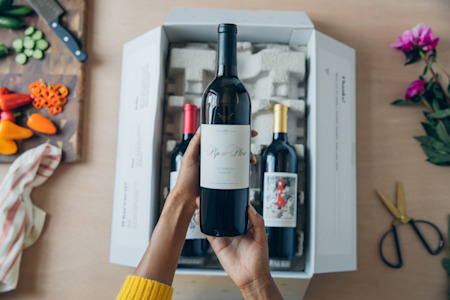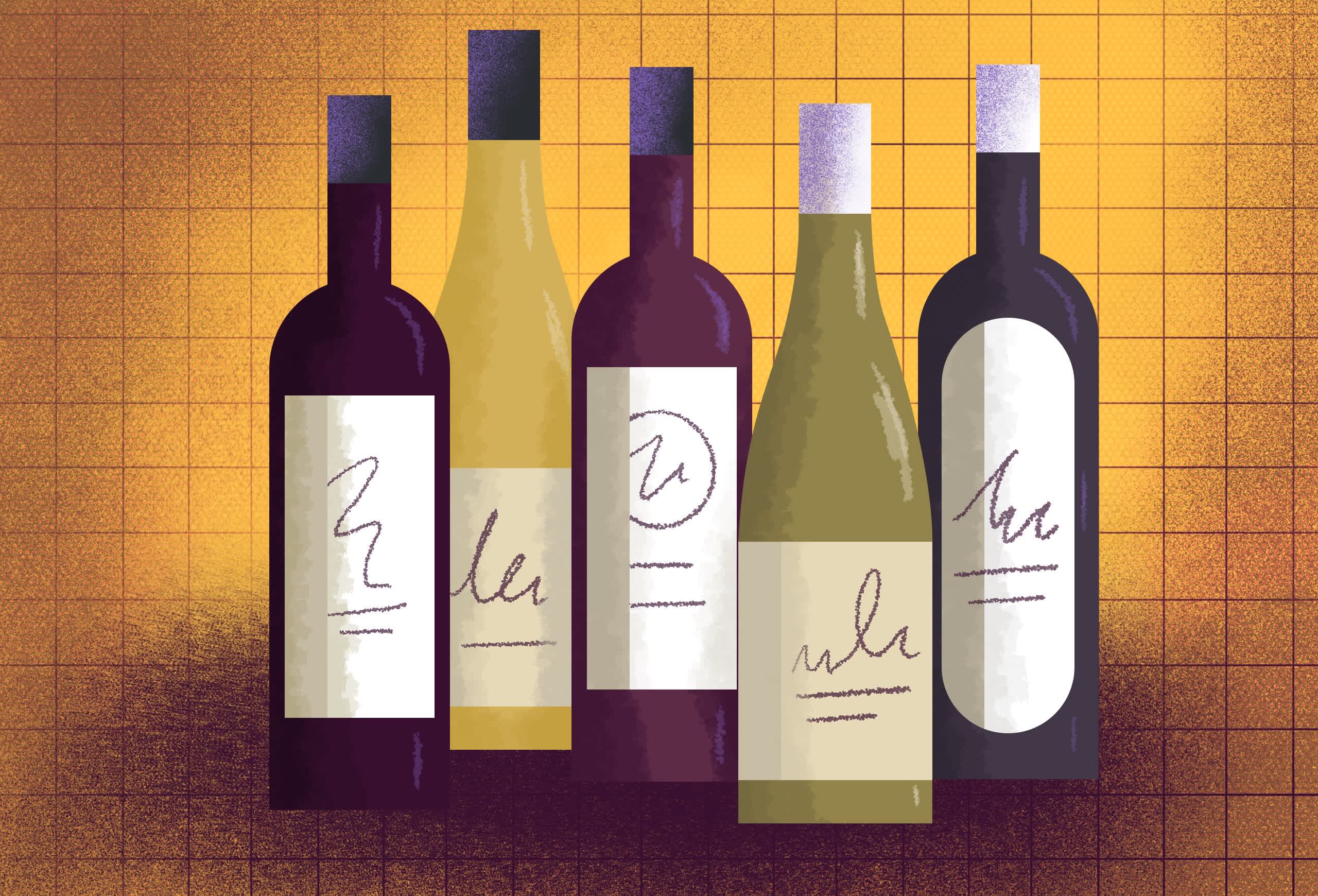What You Need To Know About Wine Color
Learn about how wine gets its color and what that can tell you about what's in your glass
Wine is not as easily broken into red, white, and rosé as we might like. There is a color spectrum that runs from the deepest purples to the lightest lemon tinted whites. The colors that show through your wine glass can tell you more about what a wine will taste like than you might think.
In a formal blind wine tasting, a deep red wine in the glass could give you a hint to the grape variety. It might be a Syrah or a Cabernet. If you are trying a viscous, amber-colored white wine, it's very possible it's a dessert-style sweet wine.
The color of the wine is the first clue you get to what a wine will taste like, and it's the first step in assessing a wine's quality.
In red wine, the color almost always comes from the contact that pressed juice has with the grape skin. As red wine ages, pigmentation (color) falls out, and the wine will fade to brick red and then to a dull brown color.
White varietals age in the opposite direction, going from light straw to amber and then brown through the process of oxidation. In some rare cases, you can end up with red and white wines that share a similar brown hue with extreme age.
Color can give you insight into flavors, faults, and the age of a wine. We are going to talk about how wines get their color, as well as how to assess them.

Take Our Quiz Today
Get award-winning delicious wines from all over the world shipped straight to your door. Take the quiz to get the perfect pairings for your holiday season.
Take The Quiz TodayIN THIS ARTICLE:
Want personalized wines?
Get your first box of wines for $44.95 + free shipping.

Winemaking and Wine Color
Red and White wines get their color from different techniques, so we are going to first focus on red wines and then discuss white wines.
Red Winemaking
The deepness of color in a red wine depends on many things throughout the viticulture and winemaking process. The varietal, physiological ripeness and viticulture techniques (how many bunches of grapes are allowed to grow on a vine, etc.), the soil, and the weather can all affect the color of wines before they even get into the winery. In the winery, a winemaker must decide how to treat the unfermented juice, how long to let the juice stay in contact with the skins, how warm the liquid should be kept during this process, and whether or not to add in extra color. The longer and warmer the extraction process, the deeper the color.
Scientifically, color comes from the interaction of tartaric acid and anthocyanins. Lower pH wines (wines with high acidity) will typically have deeper color as the acidity works in conjunction with anthocyanins and tannins to create pigmented tannins. These are polymerized chains of color. In simple terms that means that these chemical compounds have fused to give red color to a wine.
If a wine is not deep enough there are a few tricks that winemakers can use to add more color, particularly blending in a very small amount of deep red grapes or adding a color concentrate.
Fun Fact
As wine ages these pigmented tannins continue to interact with the other phenolic compounds in wine, and eventually settle to the bottom as sediment changing the color of the wine to brick or brown instead of red.
White Winemaking
While red grapes contain color components in the pigmentation of the grape skins, white grapes don't. The color of white wine comes from other sources of phenolics in the grapes.
These phenolics are much more sensitive to oxygen which will turn a wine prematurely brown if not handled carefully. Winemakers can stabilize the color by using sulfites to limit oxygen's ability to interact with the juice.
Champagne is an interesting exception in white wines. Almost all grape juice is clear, which means that white wines can be made with red grapes. The most popular example of this is a Champagne Blanc de Noirs (Champagne White from Black - most often made with Pinot Noir grapes). During winemaking, the wine has a slight pinkish color that is soaked up by the lees (the leftover yeast from fermentation). When the lees are removed the color is cleared up like any other Champagne you might encounter.
How to Assess the Color of a Wine
In a formal wine tasting, the color is your first quality indicator. If you aren't formally tasting wine blind, you can still learn something about your wine, but this process is most helpful in discovering what it is in your glass. Smelling and tasting the wine will give you a much better insight into whether or not the wine will be enjoyable to your palate.
To assess color, make sure that your glass is clear and clean. Pour the wine in and hold it over a white tablecloth or piece of paper.
Look at wine. Is it clear or is it hazy? This can tell you if the wine was exposed to too much oxygen, that is wasn't filtered, or that it still had active yeast or bacteria and underwent secondary fermentation in the bottle. It could also indicate that it was unfiltered on purpose, this is most common in "Natural" wines.
Look at the wine again. Are there tears? This can tell you about the alcoholic strength of a wine. Is there sediment? This can tell you about the vinification or the age of the wine. Are there bubbles, and if so how vigorous are they? This can tell you about how a bottle of sparkling wine was made.
Now look for the color intensity. Is it pale, medium, or deep? Depending on the varietal this could tell you how much time the wine spent with the skins or how the winemaker handled extracting color. As color tends to fade over time in red wines, deep color typically indicates a younger wine.
Then look at the color itself, below are the colors and what they can tell you associated with different styles of wine.
Red Wine
Red wines can be described as:
Purple, Ruby, Garnet, Tawny, and Brown
Some wines like Cabernet Sauvignon, Syrah, Tannat, Zinfandel, and Malbec, are deep red/purple wines. Grenache is a medium red, and Gamay and Pinot Noir are light red.
Over time, bright red colors fade to brick red, and the rim becomes clear with color concentrated at the center of the glass. If you see this in your wine it could be an aged wine.
White Wine
White wines can be described as:
Lemon-Green, Lemon, Gold, Amber, and Brown.
Chardonnay, for example, can be anywhere from lemon to gold and varies in intensity. With many white wine grapes producing multiple styles this can give you an indication of what type you are dealing with. Pinot Gris is typically deeper in color than Pinot Grigio, despite coming from the same grape.
Rosé Wine
Rosé wines can be described as:
Pink, Salmon (Pink-Orange), or Orange
Rosé can be made in a multitude of ways, with the wine's color being determined by how it was made: skin contact with red grapes for varying amounts of time (the longer the deeper the red), or they can blend red and white wines together to get the color wine they are searching for. This makes identifying a mystery rosé incredibly difficult.
Orange Wine
Orange wine is possibly the oldest style of wine on earth, these natural-leaning wines are made with red wine techniques and white wine grapes. They are tannic and full-bodied with color ranging from Pink to Orange to Amber. These are not typically included at formal tastings, but will probably be in the near future.
IN THIS ARTICLE
Want personalized wines?
Get your first box of wines for $44.95 + free shipping.


WinePrint™ by Firstleaf
Are you looking to learn more about your wine preferences? Check out our Wine Print for an in-depth look at your personal tasting profile. Discover your favorite wines, varietals, regions, and tasting notes and get personalized recommendations wherever you are.
Learn More